Shipyard named after 61 communard. Lazarev school
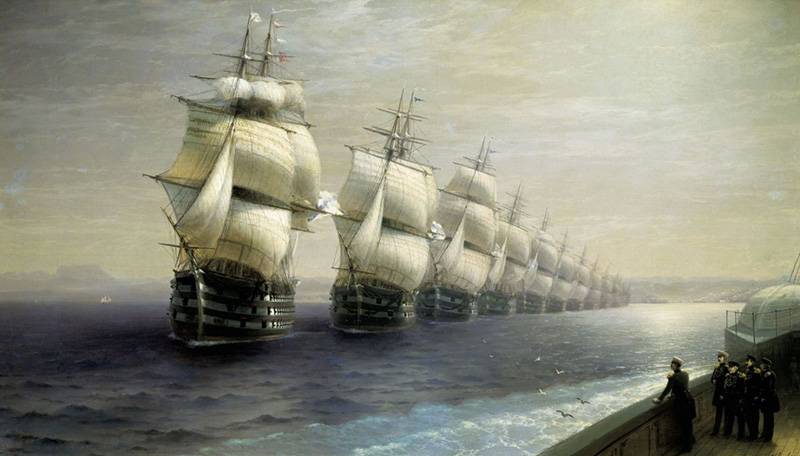
Lazarev took the helm in a difficult administrative and economic point of view, he accepted the naval and port facilities by no means the best. Until his death in 1851, he regularly worked on their improvement. Lazarev left the fleet in a much more suitable condition than he was at the beginning of his leadership. And the Black Sea Fleet entered the Crimean War with just such a difficult and demanding “Lazarev school”.
Old tasks and new ships
The second half of the position of the Chief Commander of the Black Sea Fleet and ports, Vice-Admiral Alexei Samuilovich Greig, is estimated ambiguously. With all its undeniable merits, an outstanding analytical mind, ability and hard work - the Black Sea Fleet entered the Russian-Turkish war under-staffed and with low technical readiness.
The huge sums claimed from Petersburg melted like clouds over the dry summer steppe. The reports of the main Black Sea command began to cause more and more questions and bewilderment in the capital. The financial part looked especially confusing. When the number of mysteries, amazing rebuses and striking vagueness reached a critical mass, the maritime ministry urged Greig to clarify. The fact is that in the papers 1830 and 1831. blatant inconsistencies were found. The same reports, which were passed on documents of different expeditions, differed by tens and even hundreds of thousands of rubles.
In response to a request from the ministry, from the south they responded with an ornate refusal, citing employment. The then naval minister von Müller was forced to submit to Nicholas I a report on the current difficult and delicate situation. The emperor was forced to personally write to Greig, reminding the vice-admiral that he, as commander, was responsible for the entire Black Sea fleet, including his financial activities and reporting.
Alexey Samuilovich went on raising the stakes, unsubscribing the emperor that "... to check those ... he did not have and has no means." Obviously, it was during this period that Nikolai Pavlovich decided that Greig had stayed late in the hot south, and he needed to be cooled by the air of the capital. It was decided to send to check the state of affairs of the Black Sea Fleet and the ports of the captain 1 of the rank of Kazarsky and to appoint a new chief of staff in the person of Rear Admiral Lazarev as an additional measure. As a result, an attempt to touch the secrets of the Nikolaev Admiralty cost Kazarsky life. Mikhail Petrovich was waiting for a career commander.
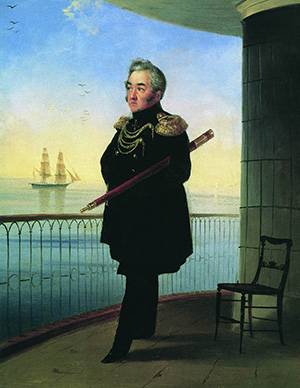
The Bosphorus expedition, brilliantly conducted by Lazarev, presented him with a vice-admiral's epaulettes and the post of adjutant general. In August, 1833, he is appointed to correct the post of commander of the Black Sea Fleet and ports. Formally, at the helm, Greig retired, referring to the disease. Realizing that his career in these places is coming to an end, Alexey Samuilovich was preparing for the transfer.
At the same time, he did not stop bothering about his chief quartermaster of Crete, with whom Lazarev had a critical level of relations. Not without reason, suspecting Nikolai Dmitrievich of embezzlement, Mikhail Petrovich wanted the case to be tried in court. The Cretan complex had a complex relationship with the maritime department, which had no fewer questions for the chief engineer than the Madrid court had taken to Columbus after returning from the first voyage to the Indies.
It was not a secret that the Cretan officers repeatedly refused to naval officers in response to their requests and demands to allocate the required sums for the repair and maintenance of ships. “All over the state!” - the unshakable chief quartermaster admonished them, poetically pointing out that according to the state a person has two eyes, and he, the Cretan, has only one. The descendant of Greek corsairs modestly explained the loss of his eyes by participating in battles, but evil tongues explained behind the scenes that the loss of one of the organs of vision occurred under more trivial circumstances, that is, during a fight in a not sober form.
But there were also witnesses who claimed that the Rear Admiral and his good acquaintances: effective owners from Odessa - were operating among themselves with absolutely “irregular sums”. Vice-Admiral Greig, using all the levers he had, was able to secure Cretan, whose position was becoming increasingly piquant, “clean” resignation.
October 9 1833 after a farewell dinner, Alexey Samuilovich Greig left Nikolaev forever. Eyewitnesses claimed that his departure was rather crowded. On the same day, but through the Odessa outpost, Nikolai Petrovich Kritsky left the city and got off with a slight fright. He was heading to South Palmyra, where a new place of residence, old business partners and, of course, the most advantageous offers awaited him. At the end of his career, the fleet ober-quartermaster Cretan tried to conclude a curious contract for the supply of canvas for the fleet, which was characterized by respectable decay, but this attempt to put together a severance package was stopped by Vice Admiral Lazarev.
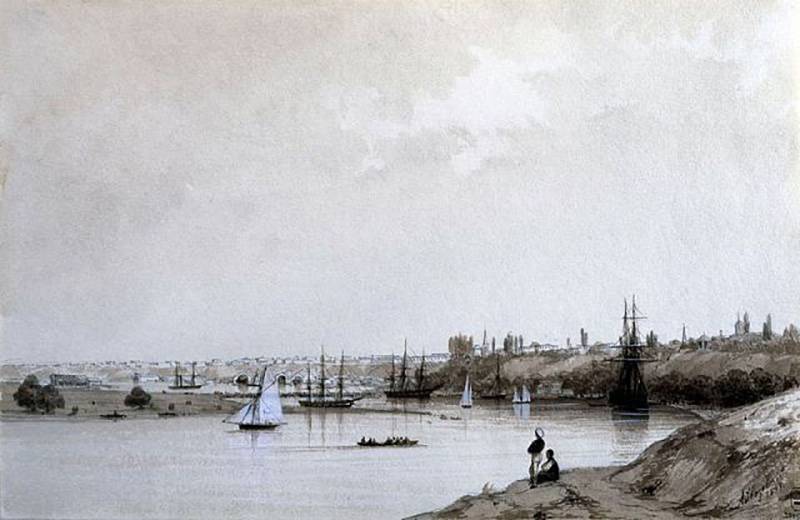
19 December 1834, the year Lazarev was finally approved as commander of the Black Sea Fleet. Before the new commander lay a boundless sea of work. One of the first tasks was, finally, to bring the Black Sea Fleet to its full strength. By the spring of 1834, the number of battleships 12 and 9 frigates were counted in it. However, some of them needed repairs. The condition of the two battleships was such that more than a million rubles were asked to repair them even under Greig. In this case, the period of stay in the ranks after the repair was determined in two or three years. With such unreliable results, such significant sums were questionable, and Lazarev ordered to convert these ships into block shields.
A careful examination of the status of other ships showed that in the next four years, four more battleships and five frigates would have to be written off. Thus, the fleet in a short time threatened to cut by almost half. The new leadership was forced to report to St. Petersburg on the need for urgent action. The available capacity of the Ingul shipyard was clearly insufficient due to the total shortage of workers.
Time, too, was just barely enough, because the gratitude of the Brilliant Porta for salvation of his sultan from the troops of the insurgent ruler of Egypt, Mohammed Ali Pasha, could melt away with a cloud of incense in Topkapi's harem. Lazarev had to ask the emperor for the most necessary resource: like his predecessor, the new commander asked for money for the fleet.
Nikolay I ordered to select everything necessary that annually in Nikolaev built the new battleship and every two years - a frigate. In St. Petersburg, having rightly decided that they knew better in place, they suggested that the Black Sea Maritime Administration itself develop the necessary shipboard states, based on local realities and possibilities. In the autumn of 1834, the naval headquarters presented the considerations on the size and composition of the fleet formulated by Lazarev and his assistants. They have been thoroughly studied and analyzed.
It was supposed to completely abandon the construction of 74-gun battleships, since now not only the dimming naval forces of the Brilliant Ports, but also the fleets of its probable allies were considered among the likely opponents. Greig's idea to build two types of frigates was also reflected: large 60-guns for combat in the line and multipurpose 44-guns.
In May 1835, the new states of the Black Sea Fleet were approved. According to them, in the coming years it was planned to have in service two 120-guns and twelve 84-guns of the line, four 60-guns and five 44-gun frigates, five corvettes and ships of other classes. The total number of ships was somewhat reduced compared with the offer of the Black Sea region due to the need for more economical financing.
The tradition of building 120-gun ships in Nikolaev was continued. At the beginning of 1832 of the year, even under Greig, the design of a three-deck battleship with a displacement of 4700 tons and crew of 950 people began. The theoretical design of the corps was developed directly by Alexey Samuilovich, while the then chief of staff Mikhail Petrovich Lazarev worked on the spars, sailing armaments and rigging.
It was supposed to build such ships in series. The first was laid on the big slipway of the Ingul shipyard in Nikolaev 30 March 1832 of the year and was named "Warsaw". The length of the lower deck was 63,8 meters, the width with plating - 17,2 m, the draft in full load - 7,7 m. The launch of Warsaw took place in November 1833, when Vice-Admiral Lazarev performed the duties of the fleet commander.
Artillery weapons of the new battleship, apparently, was completed from the already existing at the shipyard barrels and consisted of ten types of different guns. Four poods of unicorn, fifteen caronads in caliber from 8 to 36 pounds, sixteen long-barreled and ten short-barreled 36-pound guns were installed on Warsaw. Thirty-four 24-pounders, thirty-two 18-pounders and ten 12-pounders have been added to this number.
Since during the design of Warsaw, much attention was paid to its seaworthiness, the battleship showed very decent results during trials. It is noteworthy that its construction was led by the colonel of the shipboard engineer corps Ivan Yakovlevich Osminin, who in 1820 was built in Sevastopol by the brig Mercury. And "Warsaw" was his last ship. After entry into service, this battleship received flagship status, and Vice Admiral Lazarev regularly raised his flag on it.
After the descent of "Warsaw" in the free space laid the battleship of a smaller size. It was a two-arm 84-gun "Silistra" displacing 3540 tons. 6 December 1835 of the year she was launched. Unlike Warsaw, which has a fairly wide range of artillery weapons, Silistria received 88 24- and 36-lb caliber guns. The commander of the ship already a month after the bookmark was the captain of the 2 rank Pavel Stepanovich Nakhimov. He commanded this battleship for nearly twelve years to September 1845.
Shipbuilding process continued, gaining momentum. In 1835, after the descent of Silistra in Nikolaev, another 120 gun battleship Three Saints was laid, which, along with Warsaw, was initially viewed as a flagship. In another boathouse, the laying of the 84-gun ship of the line with the name “Sultan Makhmud” uncharacteristic of the Russian fleet, directly indicating the successful outcome of the recent Bosporus expedition, was carried out.
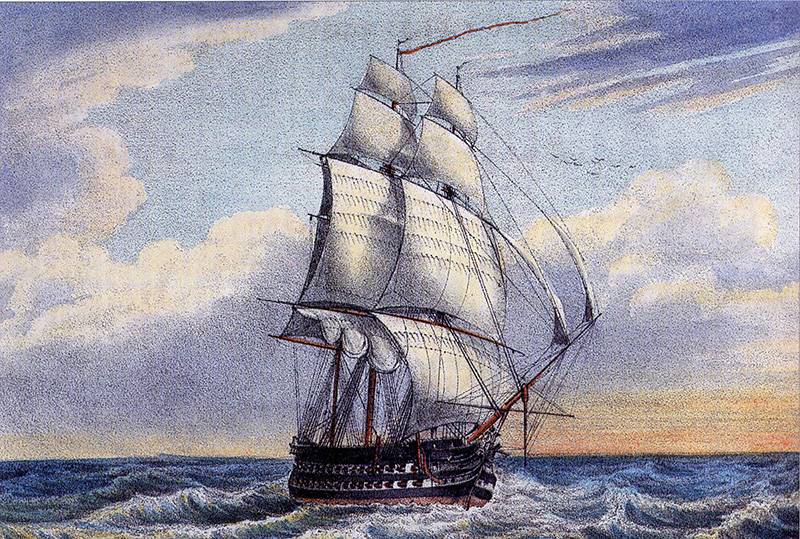
However, the analysis showed that even at such a high (relatively recent time) rate of construction of battleships, those in service will age and be written off earlier than a change occurs for them. In a personal meeting with Nicholas I, Vice Admiral Lazarev convinced the emperor of the need for new funds for the development of the fleet. In October 1836 of the year, a corresponding resolution was issued to allocate additional 4 million rubles to the Nikolaev Admiralty at the expense of sums from Turkish contributory money.
With this money, it was planned to build one 84-gun ship of the line and three more with the help of contractors. In drawing up the final estimate, it turned out that the available financial resources would be enough for only three ships: one for state-owned and two private. I had to turn to the owner of a private shipyard in Nikolaev to Mogilev merchant Shlem Rafalovich, who worked closely with the previous administration.
The fact is that after the departure of Greig from Nikolaev, many business people left the business and left, assuming that Lazarev would not give enough private contracts. However, Rafalovich, who possesses patience and endurance of the old Nile crocodile, was in no hurry to draw conclusions and eventually received an order for two 84-gun battleships Uriel and Gabriel. During the end of the 30 and in the forties, the Black Sea Fleet received from the Nikolaev Admiralty 84-gun and 120-gun battleships, 44- and 60-gun frigates, some of which, for example, the battleship Paris and the Twelve Apostles, were considered reference for quality.
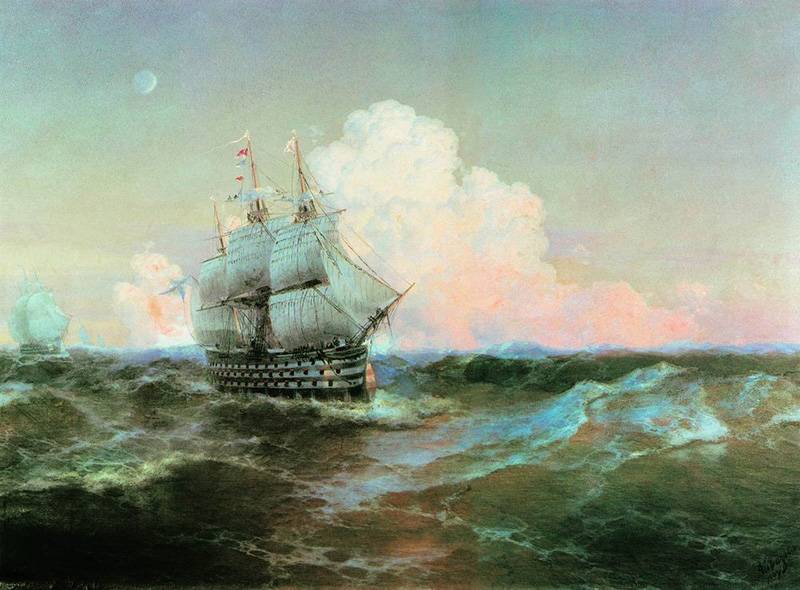
"Nicholas shipyard should never fall"
It was with these words that Vice Admiral Lazarev described the role and importance of the shipbuilding center in Nikolaev in one of his private letters.
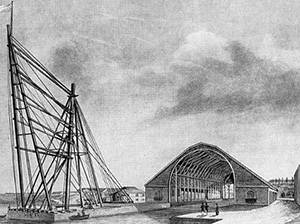
From 1838, a large-scale restructuring of the Nikolaev Admiralty Shipyard began. Were built more than five dozen buildings for various purposes, including rope and foundries. Three new slipways, an outbuilding wharf, many workshops, including a physical one, were built. It began the manufacture of thermometers, barometers, navigator ready and other devices. This was the most important undertaking, since in the recent past similar equipment had to be purchased abroad at fabulous prices.
A great deal of work was also carried out with personnel: their training was carried out through special training crews that produced skilled artisans. Under Lazarev, a large complex of barracks was built for naval crews, which has survived to this day.
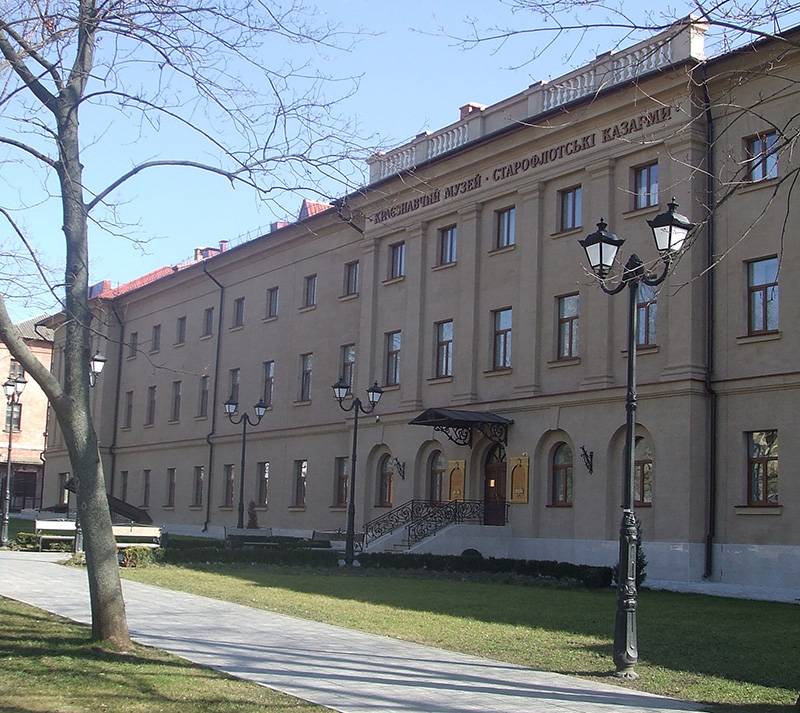
The large-scale reconstruction of the shipyard continued until the middle of the 40s. XIX century. Around these years, experiments were conducted in Nikolaev with the newest large-caliber 68-pounder bomb weapons with a bore diameter of 214 mm. Comparative tests with standard for battleships and frigates 36-pounder long-barreled guns showed a tangible fire superiority of bombing guns. With comparable firing distances in the 14 cable, new artillery systems could fire twice as heavy bombs, which caused more damage to the target.
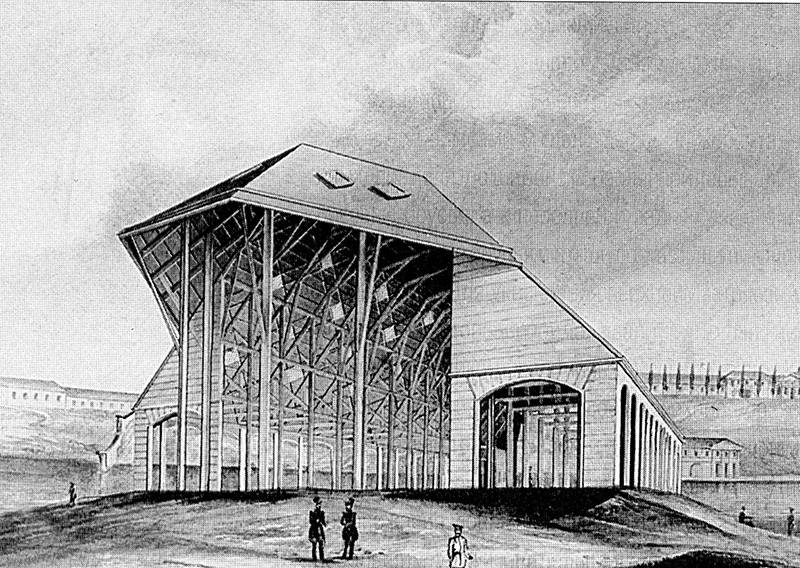
In 1839, twenty-eight such guns were to be installed on the laid ship of the Twelve Apostles. In the future, bomb weapons were installed on all battleships and frigates built in Nikolaev before the Crimean War. The main and practically the only supplier of increasing and quantitatively and qualitatively artillery weapons for the Nikolaev shipyard was the Olonets Alexander Plant.
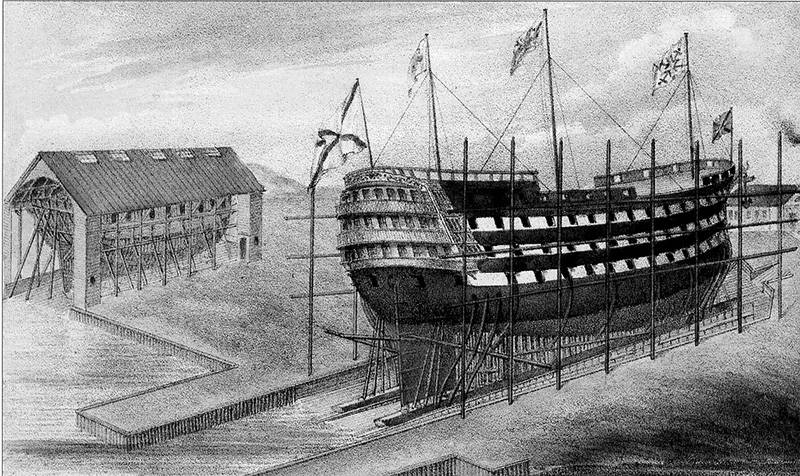
Along with the increase in the firepower of the new ships, there was an improvement in their design - the hull lines became sharper with a straight upper deck line. In the set they found increasing use of metal products: riders, pillers, knits and fasteners. The underwater part of the ships was already obligatory trimmed with copper sheets.
Lazarev, who became a full admiral in 1843, attached great importance to steamships that were becoming more common. In total, under his command, 15 steamboats were purchased in England, including quite large ones - Taman, Berdyansk and Enikale with horsepower 180 machines. In 1848, the steam-powered frigate "Vladimir" built in England with the 400 power unit l arrived in the Black Sea. with.
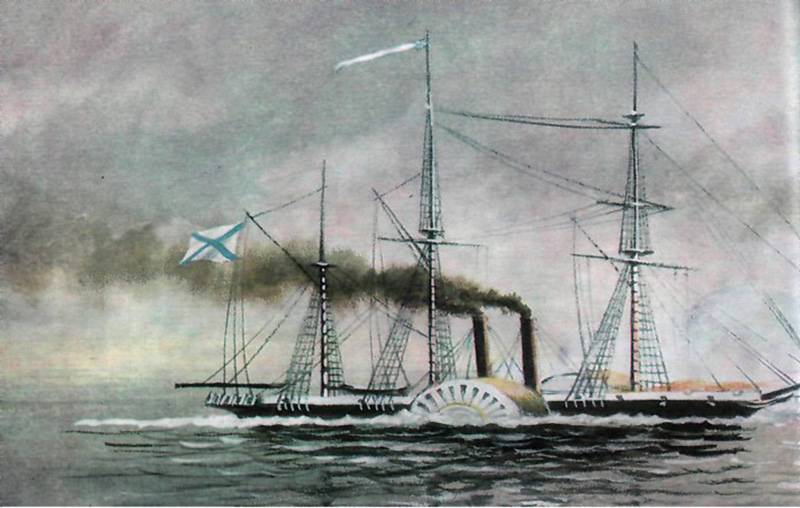
Understanding the growing importance of ships with steam engines in future wars, Lazarev and his closest assistants and students, Vladimir Alekseevich Kornilov and Vladimir Ivanovich Istomin, agreed that it was necessary to create a special shipbuilding plant at Nikolayevsk Admiralty. Moreover, it was much cheaper than buying ready-made ships abroad. Thus, the cost of construction of the steamer-frigate "Vladimir" was more than 400 thousand rubles.
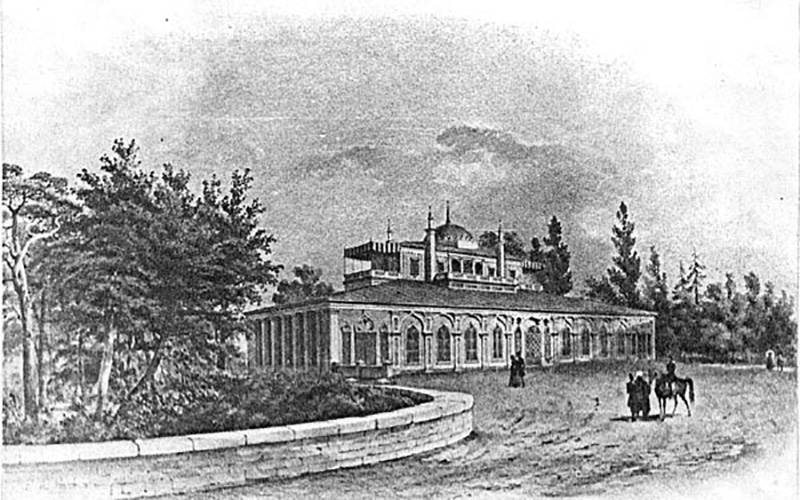
The government gave the go-ahead for this project and the purchase in England of various equipment worth 300 thousand rubles. The start of work was planned no earlier than 1851. However, these plans did not materialize. 11 April 1851, admiral Mikhail Petrovich Lazarev died after a serious illness. A member of the Admiralty Council, Lieutenant-General Moritz B. Berch, who at that time was already 75 years old, was appointed to his position.
It is difficult to overestimate the contribution of Mikhail Petrovich Lazarev to the development of the Nikolaev shipyard and fleet. His works raised a whole generation of officers, who were awaited by the flame of Sinop and the bastions of Sevastopol, where many of them would remain forever.
- Denis Brig
- Shipyard named after 61 communard. The Kazarsky case - 2
Shipyard named after 61 communard. The Kazarsky case - 1
Shipyard named after 61 communard. Revitalizing Shipbuilding Under Admiral Greig
Information